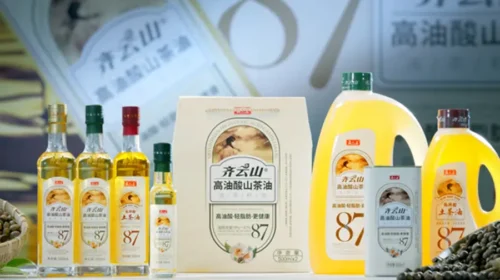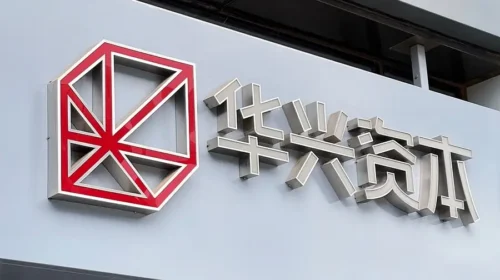Best Wellness Offers Personal Hygiene Pads – and Slumping Revenue – to IPO Investors

The medical consumables maker has filed for a Hong Kong listing, even as its weaknesses include declining revenue and heavy reliance on its largest single customer
Key Takeaways:
- Best Wellness Health has filed for a Hong Kong IPO, seeking funds for R&D and other uses as it tries to reverse its declining revenue
- The company’s largest customer, Kimberly-Clark, supplies more than 70% of its revenue, posing a risk after their current supply deal expires at the end of 2024
By Ellie Si
The times have certainly changed for Best Wellness Health Care & Hygiene Ltd., a maker of medical consumables and personal hygiene products whose business briefly soared on skyrocketing demand for surgical masks at the start of the pandemic.
But that brief moment in the spotlight quickly ended with intensifying competition in the space, leading the company to stop producing masks altogether. After losing that cash cow and coming under pressure from new pandemic-control disruptions, the company’s revenue plunged nearly 30% in the first half of this year. But not one to be deterred by such matters, Best Wellness, whose main focus is absorbent medical pads, is hoping to soak up some investor cash with its second attempt at a Hong Kong IPO.
The company’s preliminary prospectus filed last week shows it has two main business models, one as an original design manufacturer (ODM) and the other as an original brand manufacturer (OBM). It says it’s a leading ODM in the field of medical underpads, sanitary pads and incontinence pads, exporting its products mainly to the U.S. and EU. Third-party data cited in the document shows the company is China’s biggest original equipment manufacturer (OEM)/ODM of absorbent sanitary products and incontinence pads based on its export value in 2021.
The company said that funds raised in the IPO will be used to further enhance its product development efforts, including more collaboration with its customers to deepen their relationships. It will also use the funds to expand its production facilities and develop more automation systems for those facilities.
According to third-party data in the prospectus, the worldwide nursing pad market has grown steadily over the past six years as the global population ages and awareness of nursing pad products increases. The market grew at an annual compound rate of about 13.7% from 9.9 billion yuan ($1.38 billion) in 2016 to 18.8 billion yuan by 2021. The growth rate is even faster in China, boosting the country’s share of the global market to 20.8% last year from 19% in 2016. China is expected to keep outpacing the global growth rate, forecast to hold 23% of the worldwide market by 2026. That could play to Best Wellness’ advantage due to its base in a country with such big potential, even though most of its products are now exported.
The ODM business has been the company’s overwhelming breadwinner, growing from 390 million yuan ($54 million) in 2019 to 525 million yuan last year. Those products accounted for 97% or more of the total in 2019 and 2021, though the figure dropped to 76.4% in 2020 as the company found a sudden new revenue source in mask sales during the first year of the pandemic. After the years of steady growth, the company’s revenue hit the skids in the first half of this year, with ODM revenues plunging 30% to 169 million yuan, accounting for 93.4% of the overall figure.
The company’s profit fell 35.4% year-on-year to 47.9 million yuan last year after it dropped the lucrative mask business. But the figure stabilized in the first half of this year, with the company posting a 13.15 million yuan profit for the period, up 9.9% from a year earlier.
Own-brand development
Apart from manufacturing its products for other brands, Best Wellness is also trying to create its own brands that are typically more profitable. The company entered the OBM business for its medical consumables and personal hygiene products with the launch of its Jefcare brand of incontinence pads and Yuezizai sanitary napkins in 2019. Those products carried a gross margin of 53.1% in the first half of this year, double the 25.8% for its ODM business. Despite that promise, those products currently only produce a few million yuan in annual revenue, meaning they have yet to contribute meaningfully to its financial results.
In 2020, Best Wellness produced and sold its own-brand masks at the request of the Chinese government to help combat the Covid-19 pandemic, driving the company’s OBM revenue to a whopping 140 million yuan that year with a gross margin for the mask business as high as over 60%. But it stopped mask production in October 2020, leading to a sharp drop in its OBM business as things returned to more pre-pandemic-like conditions.
While the pandemic may look like a boon for Best Wellness, it has, in fact, been a double-edged sword due to severe logistics and transportation disruptions it caused. That reality was on display during recent flareups this year, when the utilization rate of its two main manufacturing facilities fell significantly from over 75% in 2019-2021 to between 57.1% and 51.1% in the first six months of this year. That drop was a primary factor in the 27.6% revenue plunge to 181 million yuan in the first half of this year.
The company’s reliance on a single distribution center in Beijing’s Miyun District has also been a source of difficulty, since China’s capital often implements stricter Covid-19 prevention measures than other cities around the country.
Leaning on Kimberly-Clark
Compared to OBM that requires big investment to develop a brand, the ODM business has lower barriers to entry but is highly dependent on individual customers, posing a different sort of operational risk. According to its prospectus, more than 91% of Best Wellness’ revenue came from its top five customers in the past three and a half years. That includes global health care giant Kimberly-Clark (KMB.US), which is Best Wellness’ single largest customer, contributing more than 70% of its revenue every year except 2020.
In the prospectus, Best Wellness said the company’s current agreement with Kimberly-Clark will expire at the end of 2024, with no assurance it will be able to renew the deal afterwards.
The company also noted that its relatively weak bargaining power means Kimberly-Clark could impose new conditions on a future agreement renewal, which could further erode its profits. As it gets squeezed by such demands, its own-brand products will become a key diversification move.
In valuation terms, Hong Kong-listed Hengan International Group (1044.HK), which also produces personal hygiene products like sanitary napkins and disposable diapers, has a historical price-to-earnings (P/E) ratio of about 12.6 times. A similar ratio using Best Wellness’ 2021 profit would give the company a modest market cap of just HK$660 million ($84.6 million), a tiny fraction of Hengan’s HK$37.6 billion.
What’s more relevant for Best Wellness right now is the Hong Kong stock market’s anemic performance of recent months, meaning it will have extra difficulty attracting investors. That factor, coupled with its far smaller size than Hengan and declining profits, mean the company might may need to chase a more conservative valuation to attract investors if its listing gets the stock exchange’s green light.
To subscribe to Bamboo Works weekly free newsletter, click here






